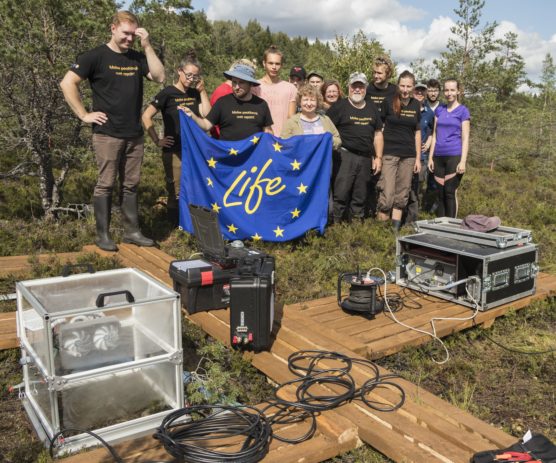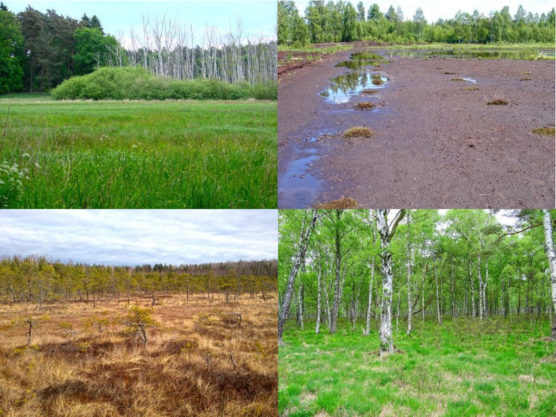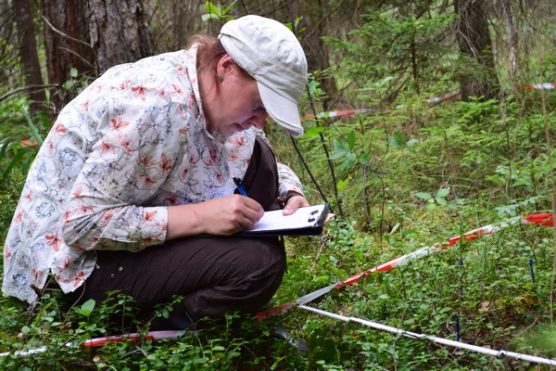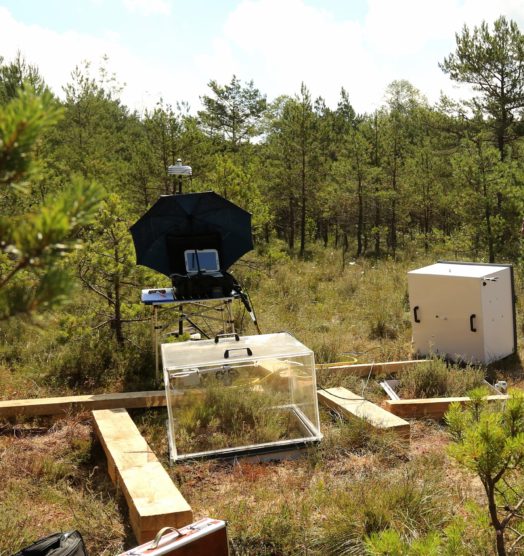Measurements of greenhouse gas (GHG) emissions from peatlands have started on all the project sites, in Estonia, Latvia, Lithuania, Poland and Germany. This summer, NABU’s national coordinator visited Estonia and Latvia, to supervise and assist with the instalment of the GHG monitoring plots. Testing of the instrumental measurement system was successful.
Valuable data on GHG fluxes from a variety of peatland habitat types and conditions – from intact to heavily damaged – will be collected during the summer vegetation period from 2018 to 2020.

The project sites
The German project site, Biesenthaler Becken, consists of 15,5 ha of drained bog forests. In Poland, the project sites are located within the Slowinski National Park and cover 1.350 ha of degraded raised bogs, forest bogs and active raised bogs, which are significantly impacted by past peat mining and drainage. The Estonian sites form a mosaic of different peatland types (e.g. degraded calcerous fen, transitional and quaking mires, swamp woods, etc.), the majority of which are heavily affected by drainage. Also, the Latvian and Lithuanian sites consist of various peatland habitat types in different states of degradation: Alkaline fens, Calcareous fens, transition mires, Bog forests, Depressions on peat substrates, etc.

Direct and indirect approaches to greenhouse gas measurements within Peat Restore
LIFE Peat Restore is conducting direct measurements based on an instrumental measurement system (more detailed description), in combination with the application of GEST (Greenhouse Gas Emission Site Types), which is an indirect technique to quantifying GHG emissions. According to this approach, it is possible to assess and monitor GHG fluxes from peatlands by measuring water table levels together with the vegetation forms identified on the sites. In essence, the GEST approach provides estimates of the balance of greenhouse gases based on the forecasts of vegetation dynamics and of water conditions.
For the last two vegetation periods since 2017, Peat Restore partners have been busy mapping vegetation covers on their project sites (e.g. identifying key plant species), in order to assign vegetation forms, which are then categorised as specific GEST types. As a result of this activity, the project has already identified several new GEST types, which will be added to the GEST Catalogue.

Although GEST is still a relatively new approach, it has already achieved a fairly comprehensive catalogue of GESTs. Yet, the tool can be expanded and improved by adding missing GEST types, as well as making available additional flux measurements. Also, with the direct and indirect measurements, Peat Restore will attempt to calibrate the GEST types with the actual values obtained by direct measurements.
By 2021, the global warming potential (GWP), as well as the GHG emissions from peatlands under different scenarios (e.g. before and after restoration measures), will be calculated and the results disseminated. The use of both measurement approaches – direct instrumental monitoring and GEST estimations – will help reveal the contribution of peatlands to the long-term mitigation of greenhouse gases.

Peat Restore within the context of the Paris Agreement
One of the key outcomes of the 2015 Paris Agreement was the parties’ commitments to GHG emissions reduction targets, in order to limit the global temperature increase to 1.5 degrees above pre-industrial levels. To achieve the targets and effectively reduce national emissions as well as adapt to the adverse effects of climate change, States must develop comprehensive climate policy strategies.
The combination of climate action efforts planned by the States is known as the ‘nationally determined contributions’ (NDCs). These so-called NDCs will be submitted every five years by the parties and is expected to be progressively more ambitious for each subsequent cycle.
LIFE Peat Restore provides a timely contribution to these efforts, as it will obtain valuable emissions data that can be added to national GHG inventories. Above all, the project hopes to demonstrate to policy-makers that peatland restoration and protection must be an integral part of national climate strategies, if the Paris Agreement commitments are to be fulfilled.


